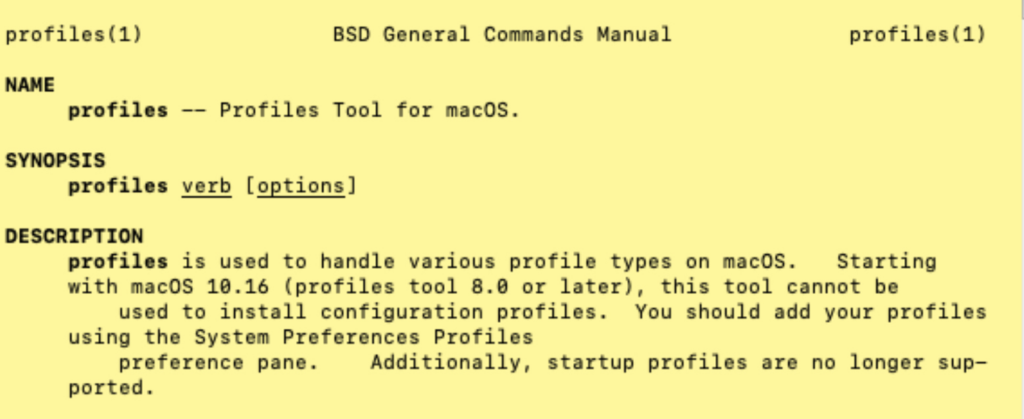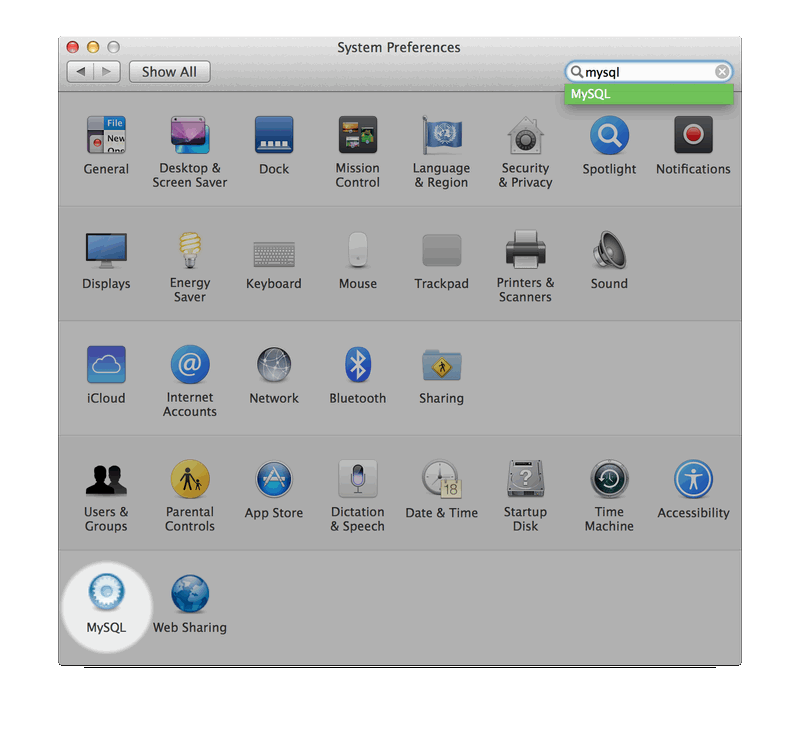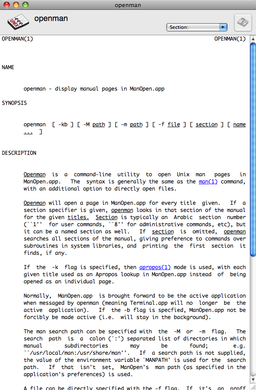
Prolog
This manual page is part of the POSIX Programmer's Manual. The Linux implementation of thisinterface may differ (consult the corresponding Linux manual page for details of Linux behavior), or the interface may not be implemented on Linux.If you are installing your own tools then possibly man.conf may need to be configured with your installation prefix. If you have duplicate tools installed then the manual for the command first in your PATH is presented. You can read another manual by pointing man to the directory in which that man page resides. Man -M /path/to/share/man COMMAND. Create gorgeous documents in minutes with the Pages for Mac word processor. Start with an Apple-designed template to instantly create gorgeous reports, digital books, resumes, posters and more. Or use a blank document and create your own design. Easily add images, movies, audio, charts and shapes. Here, you can enter your location and set your usual wake time. F.lux uses this information to create a custom lighting schedule for you. You can open up Preferences any time to view and change your f.lux settings. The f.lux menu can always be found to the left of your system clock. F.lux Preferences. Daytime is whenever the sun is up in your. This document is a Mac OS X manual page. Manual pages are a command-line technology for providing documentation. You can view these manual pages locally using the man(1) command. These manual pages come from many different sources, and thus, have a variety of writing styles. Find and delete files on your Mac. Use the sidebar of the Storage pane to sort through items by category, see how much space is used, and quickly find documents, apps, books, movies, backups, and other files.
Name
lp - send files to a printerSynopsis
lp [-c][-ddest][-ncopies][-msw][-ooption]... [-ttitle][file...]
Description
The lp utility shall copy the input files to an output destination in an unspecified manner. The default output destination should be to a hardcopydevice, such as a printer or microfilm recorder, that produces non-volatile, human-readable documents. If such a device is not available to the application, orif the system provides no such device, the lp utility shall exit with a non-zero exit status.
The actual writing to the output device may occur some time after the lp utility successfully exits. During the portion of the writing thatcorresponds to each input file, the implementation shall guarantee exclusive access to the device.
Macos Man Pages Locations
The lp utility shall associate a unique request ID with each request.
Normally, a banner page is produced to separate and identify each print job. This page may be suppressed by implementation-defined conditions, such as anoperator command or one of the -ooption values.
Options
The lp utility shall conform to the Base Definitions volume of IEEE Std 1003.1-2001, Section 12.2, Utility Syntax Guidelines.
The following options shall be supported:
- -m
- Send mail (see mailx ) after the files have been printed. By default, no mail is sent upon normal completion of the print request.
- -n copies
- Write copies number of copies of the files, where copies is a positive decimal integer. The methods for producing multiple copies and forarranging the multiple copies when multiple file operands are used are unspecified, except that each file shall be output as an integral whole, notinterleaved with portions of other files.
- -o option
- Specify printer-dependent or class-dependent options. Several such options may be collected by specifying the -o option more thanonce.
- -s
- Suppress messages from lp.
- -t title
- Write title on the banner page of the output.
- -w
- Write a message on the user's terminal after the files have been printed. If the user is not logged in, then mail shall be sent instead.

Operands
The following operand shall be supported:
- , the standard input shall be used.If a file operand is used, but the -c option is not specified, the process performing the writing to the output device may have user and grouppermissions that differ from that of the process invoking lp.
Stdin
The standard input shall be used only if no file operands are specified, or if a file operand is '-' . See the INPUT FILES section.
Input Files

The input files shall be text files.
Environment Variables
The following environment variables shall affect the execution of lp:
- All input files were processed successfully.
- *
- A requirement for multiple printers
- *
- Options for supporting various page-description languages
A conforming application can use one of the file operands only with the -c option or if the file is publicly readable and guaranteed to beavailable at the time of printing. This is because IEEE Std 1003.1-2001 gives the implementation the freedom to queue up the request for printing at some latertime by a different process that might not be able to access the file.
Examples
- -ddest, LPDEST, or PRINTER are used, however.)
This volume of IEEE Std 1003.1-2001 is worded such that a 'print job' consisting of multiple input files, possibly in multiple copies, is guaranteed toprint so that any one file is not intermixed with another, but there is no statement that all the files or copies have to print out together.
The -c option may imply a spooling operation, but this is not required. The utility can be implemented to wait until the printer is ready and thenwait until it is finished. Because of that, there is no attempt to define a queuing mechanism (priorities, classes of output, and so on).
On some historical systems, the request ID reported on the STDOUT can be used to later cancel or find the status of a request using utilities not defined inthis volume of IEEE Std 1003.1-2001.
Although the historical System V lp and BSD lpr utilities have provided similar functionality, they used different names for the environmentvariable specifying the destination printer. Since the name of the utility here is lp, LPDEST (used by the System V lp utility) was givenprecedence over PRINTER (used by the BSD lpr utility). Since environments of users frequently contain one or the other environment variable, thelp utility is required to recognize both. If this was not done, many applications would send output to unexpected output devices when users moved fromsystem to system.
Some have commented that lp has far too little functionality to make it worthwhile. Requests have proposed additional options or operands or boththat added functionality. The requests included:
Given that a compliant system is not required to even have a printer, placing further restrictions upon the behavior of the printer is not useful. Sincehardcopy format is so application-dependent, it is difficult, if not impossible, to select a reasonable subset of functionality that should be required on allcompliant systems.
The term unspecified is used in this section in lieu of implementation-defined as most known implementations would not be able to makedefinitive statements in their conformance documents; the existence and usage of printers is very dependent on how the system administrator configures eachindividual system.
Since the default destination, device type, queuing mechanisms, and acceptable forms of input are all unspecified, usage guidelines for what a conformingapplication can do are as follows:
- pr and fold utilities can be used to achieve reasonable formatting for the defaultpage size of the implementation.
Alternatively, the application can arrange its installation in such a way that it requires the system administrator or operator to provide the appropriateinformation on lp options and environment variable values.
At a minimum, having this utility in this volume of IEEE Std 1003.1-2001 tells the industry that conforming applications require a means to print output andprovides at least a command name and LPDEST routing mechanism that can be used for discussions between vendors, application writers, and users. The useof 'should' in the DESCRIPTION of lp clearly shows the intent of the standard developers, even if they cannot mandate that all systems (such as laptops)have printers.
This volume of IEEE Std 1003.1-2001 does not specify what the ownership of the process performing the writing to the output device may be. If -c isnot used, it is unspecified whether the process performing the writing to the output device has permission to read file if there are any restrictions inplace on who may read file until after it is printed. Also, if -c is not used, the results of deleting file before it is printed areunspecified.
Future Directions
None.
See Also
mailx
Copyright
Portions of this text are reprinted and reproduced in electronic form from IEEE Std 1003.1,2003 Edition, Standard for Information Technology -- Portable Operating System Interface (POSIX), The Open Group Base Specifications Issue 6, Copyright ©2001-2003 by the Institute of Electrical and Electronics Engineers, Inc and The Open Group. In the event of any discrepancy between this version and theoriginal IEEE and The Open Group Standard, the original IEEE and The Open Group Standard is the referee document. The original Standard can be obtained onlineat http://www.opengroup.org/unix/online.html .Referenced By
cancel-cups(1),chemtool(1),cupsaccept(8),cupsenable(8),ee(1),enable(8),lpadmin(8),lpc-cups(8),lpmove(8),lpoptions(1),lppasswd(1),lpq-cups(1),lpr-cups(1),lprm-cups(1),lpstat-cups(1),smb.conf(5),xdpr(1)
None.
Macos Man Pages
Exit Status
The following exit values shall be returned: